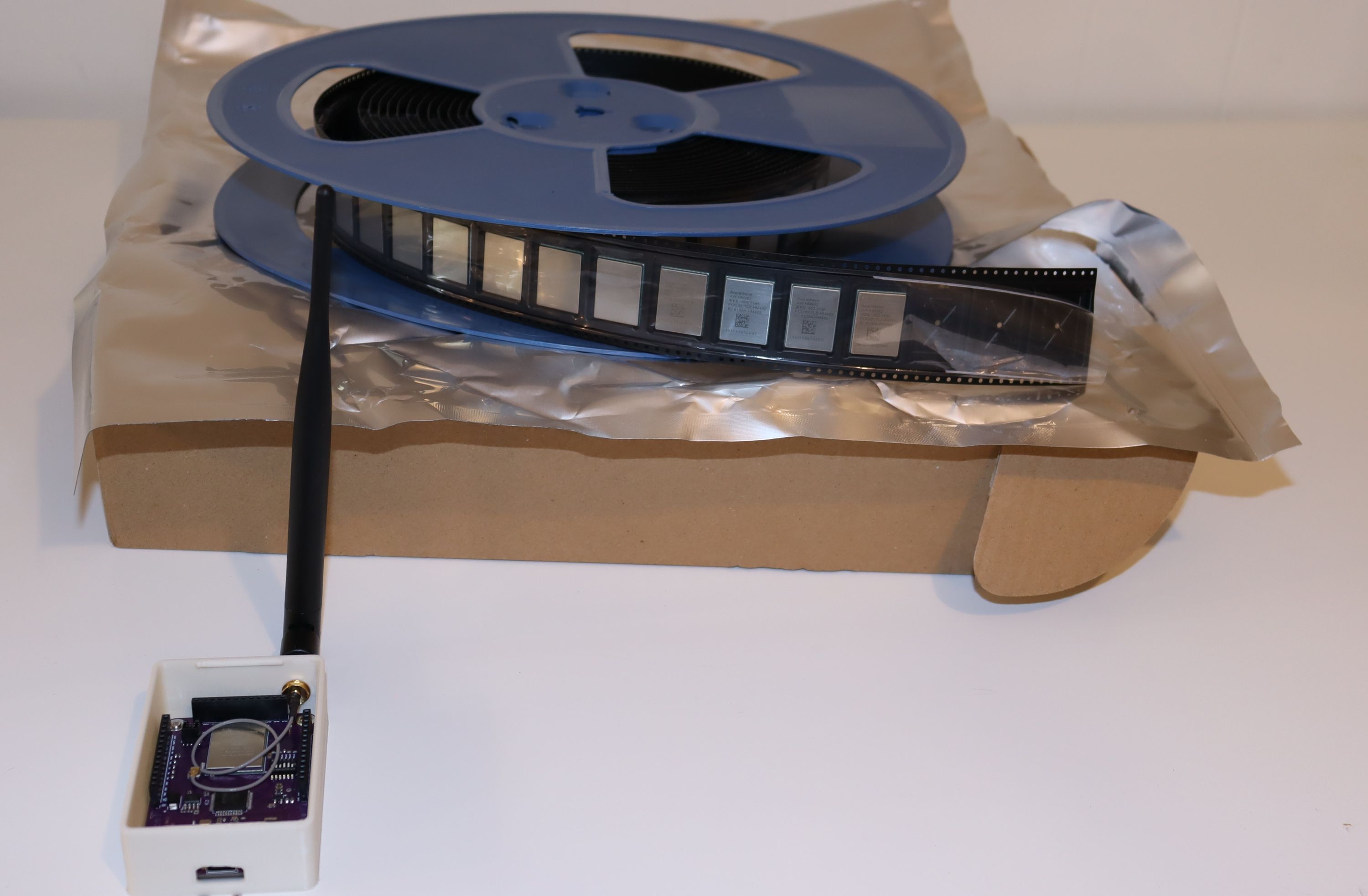Project update 2 of 12
We answer some common questions from backers
by Jim EMany thanks to everyone who supported us during the first week of our Crowd Supply campaign!
We’ve received the first reel from our Wi-Fi module vendor. We also confirmed shipment from FTDI of the FT4232HL USB-SPI/UART chips.
Below, we answer some of the questions we have received about Halo TD-XPAH:
Question: I would like to back this project, but I am in a CE country, are you planning a CE certified product?
Yes. The Newracom nrc7292 chip supports all 802.11ah regions and frequencies. A module vendor will need build and certify a version that includes a hardware frequency filter tuned to the 800 MHz CE band. We are working with several module vendors on this and plan to offer a CE version of the product as soon as a CE certified module is available.
Question: What countries does the 902-928 MHz product support?
The 900 MHz band supports the following country codes: US, AU, NZ, JP, KR. If your country follows the standards of the United States, Australia, New Zealand, Japan, or South Korea, then this product will work in your country.
Question: Linux does not yet support 802.11ah, so how does this product work?
The Newracom Linux driver presents the nrc7292 chip as a standard 802.11ac 5 GHz wifi device. The Newracom firmware running inside the 802.11ah module maps standard 802.11ac 5 GHz wifi to native 802.11ah transparently.
We are actively working with several teams to provide native 802.11ah support. When 802.11ah support is available, we will provide a native driver in addition to the current driver.
Question: Do I need to be a software or hardware developer to use this product?
This product is primarily designed for developers who would like to create 802.11ah products. That said, we will provide open source code & pre-compiled binaries to support the three add-on boards. We will also support the Arducam 5MP Mini Plus OV5642 SPI camera, which is available from many common sources.
Next week’s update will showcase how to develop and upload standalone applications. We will demonstrate this capability via a real-world usable example available both as source code and as a pre-compiled binary. Binaries are uploaded via a GUI tool over the USB port from any common operating system including Windows, Mac OS, Linux, or UNIX.

